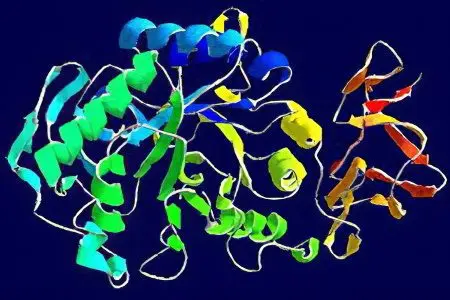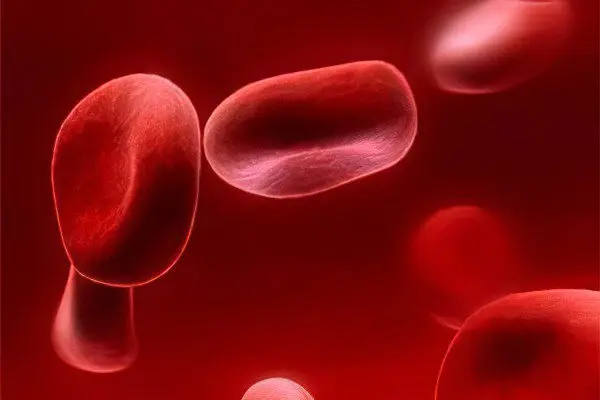Contents

Alpha-amylase is one of the enzymes of the digestive system, synthesized mainly by cells of the pancreas of the exocrine type and responsible for the breakdown of complex carbohydrate food components, starch and glycogen to simple carbohydrates (glucose). This enzyme is produced in a small amount by the salivary glands, being part of the saliva. Normally, a minimal amount of alpha-amylase penetrates into the general circulation, since the pancreas has a very good blood supply. Passing through the kidneys, the enzyme is excreted in the urine.
In this regard, two diagnostic studies of the enzymatic activity of this class of amylase are used in laboratory diagnostics:
Blood alpha amylase;
Diastase mochi (amylase mochi).
The rate of amylase in the blood
In each laboratory that conducts a blood test for the level of alpha-amylase, there are certain standards for this indicator. Therefore, in the form next to the result obtained, the norm is indicated, taking into account the units of measurement and the reagents used to determine it. The most commonly followed standards are:
When measuring the activity of alpha-amylase in mkatal / l – 16-30;
When measuring the activity of alpha-amylase in U / l – 20-100;
The norm in women
Despite the differences in biochemical processes in the male and female body, there are no significant differences in the amylase activity of the blood in a laboratory study. Therefore, the average blood amylase norms have such a wide range. It is common to both males and females.
Why is amylase elevated in the blood?
In most cases, the increase in the concentration of blood alpha-amylase (hyperamylasemia) is based on pathological processes in the pancreas and damage to organs located next to it. The mechanism of occurrence of such a pathological condition can be explained by an increased release of amylase from pancreatic cells into the systemic circulation.
This can happen under the following circumstances:
Excessive secretion of pancreatic juice;
Obstruction of the full outflow of pancreatic secretions through the excretory ducts into the duodenum;
Inflammatory changes in the pancreas or adjacent organs. In this case, an increase in blood flow occurs, which ends with an increased release of enzymes into the blood;
Traumatic or necrotic destruction of pancreatic tissue;
Such pathogenetic mechanisms underlie the conditions:
Acute pancreatitis;
Chronic pancreatitis in the acute stage;
Focal pancreatic necrosis (self-digestion of the pancreas of a local nature);
Cancer tumors of any part of the pancreas, first of all, its head;
Gallstone disease, especially with the presence of stones in the ductal system;
Tumors and wedged stones of Vater’s papilla of the duodenum, where the excretory pancreatic duct opens;
mumps virus;
Why amylase is low in the blood?

In general, if blood amylase tends to zero, this is a normal condition, which indicates the ability of the pancreas to keep this enzyme under control. But in practice this does not happen. In each person, the study of amylase will reveal its certain amount in the composition of the plasma. If the obtained indicator is much less than the lower limit of the norm, then this indicates that the enzymatic activity of the pancreas is sharply reduced.
This can be with diseases:
Total pancreatic necrosis (complete self-digestion of the pancreas);
Malignant tumors of the pancreas stage 4, when the normal glandular tissue of the organ is replaced by tumor;
Cystic fibrosis – fermentopathy of congenital origin;
Operations on the pancreas, in which most of the organ is removed.
The rate of amylase in the urine
Amylase, which is determined in the urine, is called diastase. Its activity is several times higher than blood amylase. This can be explained by the fact that amylase is in a more dilute state in the blood. Passing through the kidneys, it is concentrated in a small volume of urine. Therefore, its definition is used more often. Moreover, for analysis, you just need to collect urine. The only thing to remember is the possibility of increasing diastase, not only in connection with the pathology of the pancreas.
The established laboratory norms for diastase are as follows:
In Units/l – up to 1000;
In microkatal / l – 28-100.
Why is urine amylase elevated?

All conditions that are accompanied by an increase in blood amylase automatically cause an increase in urine diastase.
It can be:
Acute and chronic pancreatitis;
Pancreonecrosis;
Tumors of the pancreas;
Any form of gallstone disease and hepatitis;
Errors in diet and alcohol abuse. The combination of these factors is most dangerous;
Acute pathology of the internal organs of a surgical nature (appendicitis, destructive cholecystitis, intestinal obstruction, perforated ulcer);
Ectopic pregnancy.









